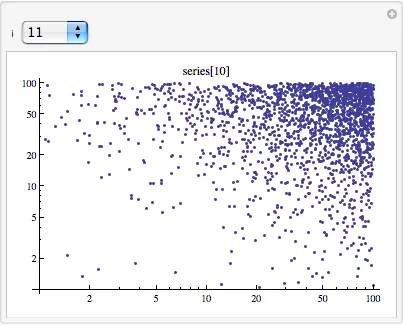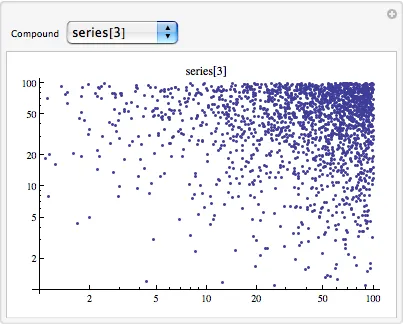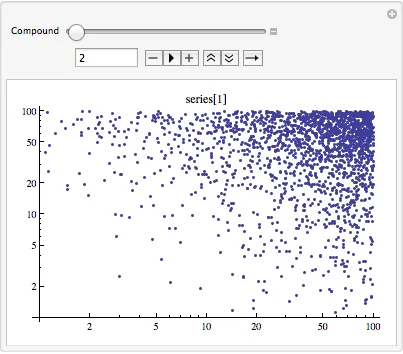[year H He Li C ... C8H14+,Grain- ]
[0 0 0.03 0.009 1E-3 ... 0 ]
[100 .1 0.03 0.009 1E-3 ... 0 ]
[200 .2 0.03 0.009 1E-3 ... 0 ]
[300 .2 0.03 0.009 1E-3 ... 0 ]
[... ... ... ... ... ... ... ]
[1E6 .5 0.03 0.003 1E-8 ... 1E-25 ]
事实是,矩阵的维度为2001 * 1476(2000个步骤和第一行表示名称,1475种化合物+1列表示年份),非常大。
我正在尝试绘制任何一种化合物的浓度/年份图。这个已经做好了。
Manipulate[
ListLogLogPlot[data[[All, {1, i}]], PlotLabel -> data[[1, i]] ],
{{i, 2, "Compound"}, 2, compounds, 1}
]
在这里,data是矩阵,compounds是变量,设置为模型化化合物的数量(此处为1475)。"compound"是滑块的标签。 问题在于,当浏览1400多个项目时,滑块移动得太快了,只需要几厘米的距离。 我尝试用下拉菜单来解决问题。
MenuView[
Table[
ListLogLogPlot[data[[All, {1, i}]],PlotLabel -> data[[1, i]]], {i, 2, compounds}
]
]
它也可以运行,但这是一个消耗处理器的过程(在执行16个内核的Xeon 16核服务器上需要10多分钟),因为Mathematica尝试在显示任何一个图之前绘制所有图。此外,下拉框没有名称,只有一系列数字(从氢的1到C8H14N +,Grain-的1475),即使图表有名称。
我正在寻找一种仅在需求时绘制图表并在下拉列表中显示名称(如果需要,默认情况下为H)的方法。或者我可以输入化合物名称的字段。这似乎可以通过 Dynamic [] 命令实现,但我无法使其正常工作。
谢谢



